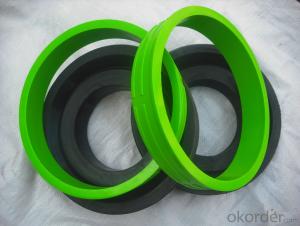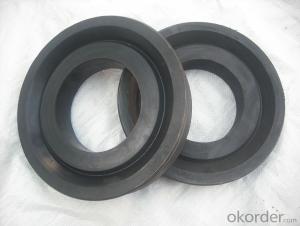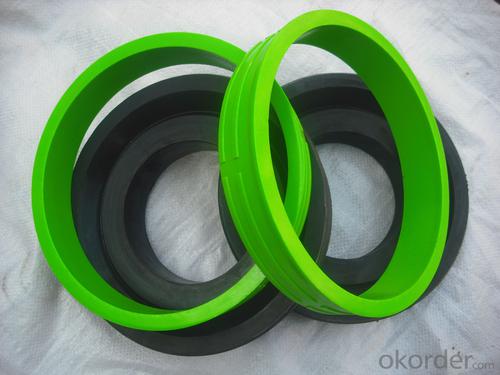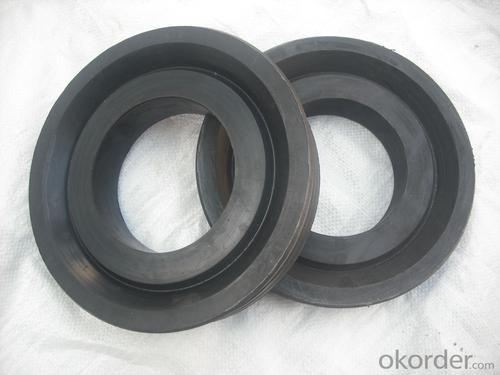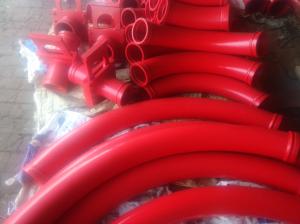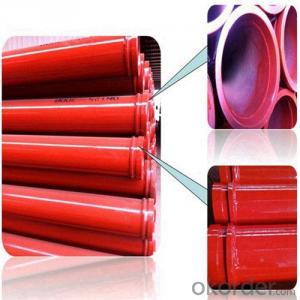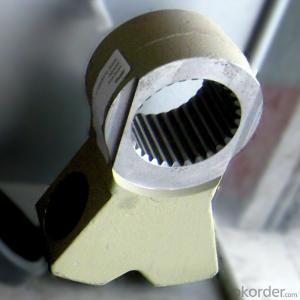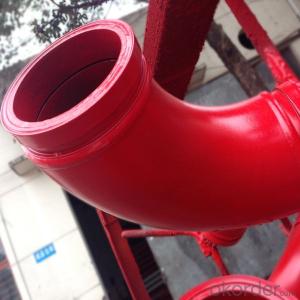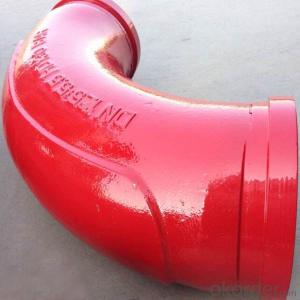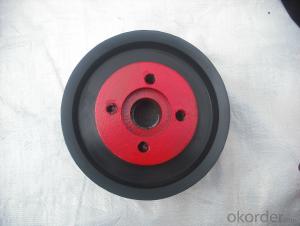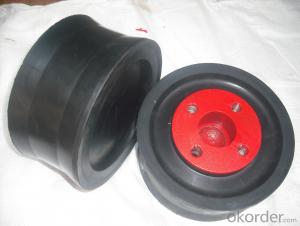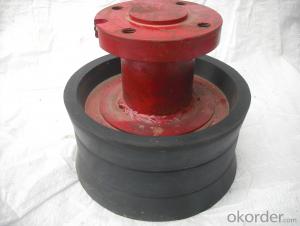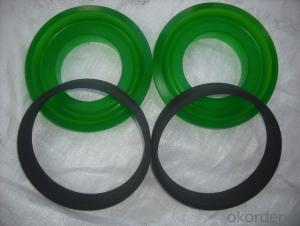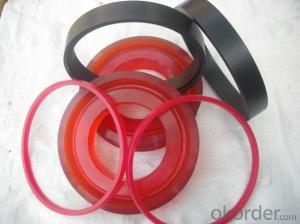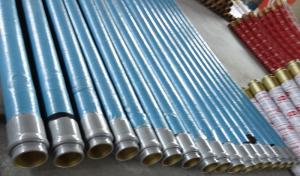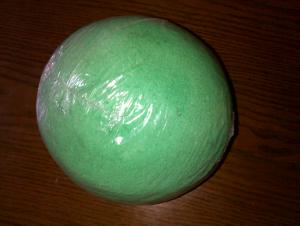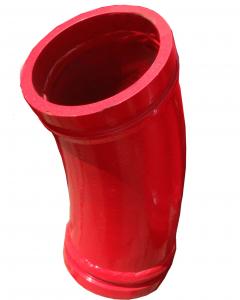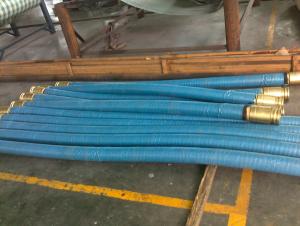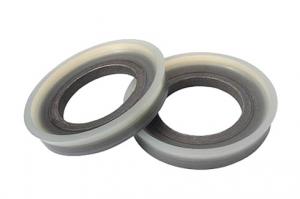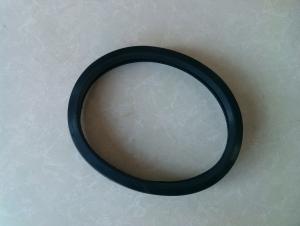ZOOMLION RUBBER PISTON WITH FIBER DN230 WITH HIGH QUALITY
- Loading Port:
- Tianjin
- Payment Terms:
- TT OR LC
- Min Order Qty:
- 3 set
- Supply Capability:
- 500 set/month
OKorder Service Pledge
OKorder Financial Service
You Might Also Like
ZOOMLION RUBBER PISTON WITH FIBER DN230
Schwing/ Sany/PM/Zoomlion concrete pump rubber piston
name | Concrete pump piston |
size | DN200 for Schwing DN230 for Schwing DN200 for PM entirety piston DN230 for PM entirety piston DN180 for Zoomlion piston DN200 for Zoomlion piston DN220 for Zoomlion piston DN230 for Zoomlion piston DN180 for Sany piston DN195 for Sany piston DN200 for Sany piston DN230 for Sany piston DN260 for Sany piston DN280 for Sany piston Other sizes and types upon request |
Material | PUR Polyurethane,natural rubber |
Applacation | Used in concrete pump truck,concrete pump,Hydrulic ram system in Construction work equipment
|
Serving brands of mounted truck concrete pump and concrete pump | Sany ,PM, Zoomlion,Schwing,CIFA and so on |
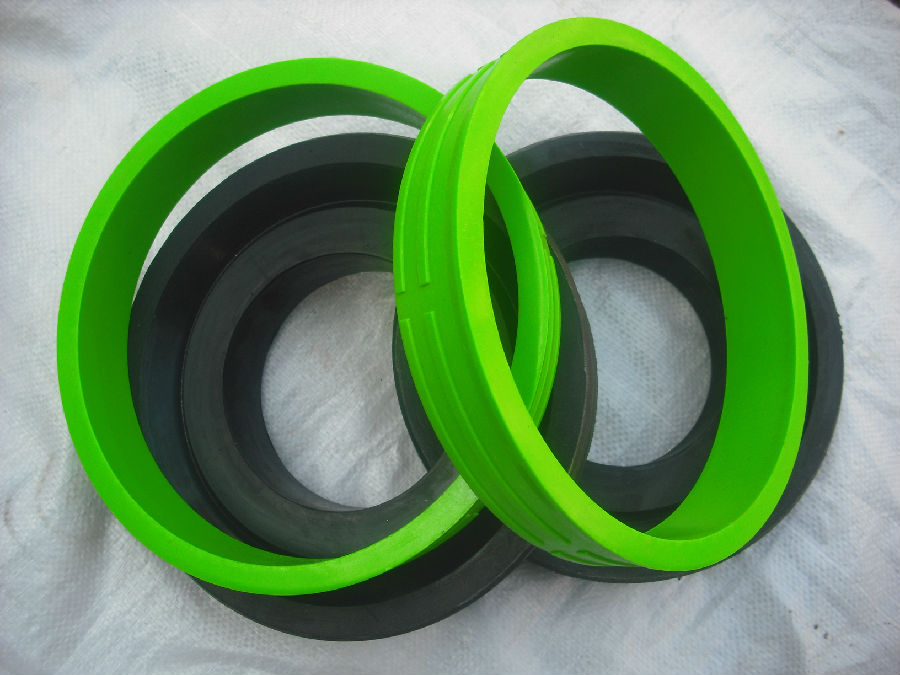
- Q: What are the signs of a damaged concrete pump S valve?
- There are several signs that indicate a damaged concrete pump S valve. 1. Leakage: One of the most common signs of a damaged S valve is leakage. If you notice any fluid or concrete leaking from the S valve, it could be an indication of a damaged or worn-out seal or gasket. 2. Reduced pumping efficiency: A damaged S valve can lead to reduced pumping efficiency. You may notice that the concrete flow is not as smooth or continuous as before, and it may take longer to pump the same amount of concrete. 3. Increased pressure: When the S valve is damaged, it can result in increased pressure within the pump system. This can cause strain on other components of the pump and lead to further damage or malfunction. 4. Unusual noises: Another sign of a damaged S valve is the presence of unusual noises during pumping operations. You may hear grinding, squeaking, or other abnormal sounds that indicate a problem with the S valve mechanism. 5. Difficulty in switching directions: The S valve is responsible for controlling the flow direction of the concrete. If you experience difficulty or resistance when switching the direction of the concrete flow, it could be a sign of a damaged S valve. 6. Inconsistent concrete flow: A damaged S valve can cause inconsistent concrete flow, resulting in uneven distribution or blockages in the delivery line. This can lead to delays and inefficiencies in the construction process. It is important to address any signs of a damaged S valve promptly to prevent further damage and ensure the safe and efficient operation of the concrete pump. Consulting a professional or the manufacturer's guidelines is recommended for proper diagnosis and repair of the S valve.
- Q: What are the signs of a damaged concrete pump accumulator?
- There exist multiple indications that point towards a damaged concrete pump accumulator. One of the most prevalent indications is a decline in the efficiency of pumping. Should you observe that the concrete pump is no longer able to effectively pump the concrete as it once did, it may be a sign of an impaired accumulator. Another indication is a reduction in the pressure of the pumped concrete. If you notice that the pressure is not as forceful as before, or if there are sudden pressure drops during pumping, it could signify an issue with the accumulator. Leaks surrounding the accumulator are also indicative of damage. Should you detect any fluid leaks around the accumulator, it may signify damage to the accumulator or worn-out seals. This can result in a loss of pressure and inefficiency in pumping. Unusual noises emanating from the concrete pump can also be an indication of a damaged accumulator. If you hear any peculiar noises, such as knocking or hissing sounds, it may be a consequence of a damaged accumulator. Lastly, if you observe any visible damage on the accumulator itself, such as cracks or dents, it is an obvious sign of damage. These damages can compromise the integrity of the accumulator and impact its performance. In summary, indications of a damaged concrete pump accumulator encompass decreased pumping efficiency, reduced pressure, leaks, unusual noises, and visible damages. Should you notice any of these indications, it is crucial to promptly address the issue to prevent further damage and ensure the smooth operation of the concrete pump.
- Q: What is the purpose of a concrete pump hopper agitator motor?
- The purpose of a concrete pump hopper agitator motor is to ensure the smooth and consistent flow of concrete within the hopper. The agitator motor is responsible for mixing and agitating the concrete mixture, preventing it from settling or becoming too thick. This motor helps to keep the concrete in a fluid state, ensuring that it can be easily pumped and distributed through the delivery system. Without the agitator motor, the concrete mixture may become stiff, leading to blockages and delays in the pumping process. Overall, the purpose of the concrete pump hopper agitator motor is to maintain the quality and efficiency of concrete pumping operations by keeping the mixture well-mixed and flowing smoothly.
- Q: Are there any specific tools or equipment required for the installation of concrete pump spare parts?
- Yes, there are specific tools and equipment required for the installation of concrete pump spare parts. Some of these tools include: 1. Wrenches and sockets: These are used to loosen and tighten bolts and nuts during the installation process. 2. Hydraulic jacks: Hydraulic jacks are necessary for lifting heavy parts of the concrete pump to provide easy access for installation. 3. Crane or hoist: In cases where the parts are extremely heavy, a crane or hoist may be required to lift and position them correctly. 4. Torque wrench: This tool is essential for tightening bolts to the correct torque specifications, ensuring a secure installation. 5. Grease gun: Lubrication is important for smooth operation of moving parts, so a grease gun is used to apply grease to specific components during installation. 6. Measuring tools: Measuring tapes or rulers are necessary to ensure accurate positioning and alignment of the spare parts. 7. Safety equipment: Safety goggles, gloves, and other protective gear should be worn during the installation process to prevent injuries. It is important to note that the specific tools and equipment required may vary depending on the type and complexity of the concrete pump and its spare parts. It is always recommended to consult the manufacturer's instructions or seek professional assistance to ensure proper installation.
- Q: Are there any specific maintenance practices for concrete pump spare parts?
- Concrete pump spare parts should be regularly inspected for signs of wear or damage. This involves checking for visible defects like cracks, leaks, or any other issues. If any problems are found, the spare parts should be immediately replaced or repaired to prevent further damage. Regular cleaning is also essential for concrete pump spare parts. These parts often come into contact with cement, water, and other substances that can cause build-up and affect their performance. Cleaning them regularly will remove debris and residue, ensuring optimal functionality. Lubrication is another important maintenance practice for concrete pump spare parts. Properly lubricating moving components like bearings, seals, and pistons reduces friction and wear, extending the lifespan of the parts. It's crucial to use the correct lubricants recommended by the manufacturer and follow their application guidelines. Proper storage is also vital for maintaining spare parts. They should be stored in a clean, dry environment, away from chemicals or substances that could damage them. Additionally, spare parts should be protected from physical damage, such as being dropped or bumped. Lastly, it's recommended to adhere to the manufacturer's maintenance and replacement guidelines. Regular servicing and inspections by qualified technicians can help identify potential issues early on and prevent major breakdowns or failures. In summary, following specific maintenance practices like regular inspection, cleaning, lubrication, proper storage, and adherence to manufacturer's guidelines are crucial for ensuring optimal performance and longevity of concrete pump spare parts.
- Q: How does a hopper agitator blade ensure smooth concrete flow?
- To guarantee a seamless flow of concrete, a hopper agitator blade is employed to mix and disintegrate any clumps or air pockets in the concrete mixture. Specifically designed to be positioned inside the hopper, the blade rotates and agitates the concrete, ensuring a homogeneous and steady state. While in rotation, the blade disperses any settled aggregates at the hopper's base, preventing blockages or uneven distribution during the pouring procedure. This uninterrupted mixing action guarantees that the concrete remains well-blended and effortlessly pours out of the hopper. Furthermore, the agitator blade aids in breaking up any air bubbles that may have formed within the concrete mixture. These air bubbles can compromise the structural integrity of the concrete and lead to an uneven final appearance. By agitating the concrete, the blade effectively releases trapped air, promoting a consistently dense mixture. In essence, a hopper agitator blade guarantees a seamless flow of concrete by effectively blending the mixture, breaking apart any clumps or air pockets, and fostering a uniform composition. This ensures that the concrete pours smoothly and evenly during the pouring process, resulting in a top-notch end product.
- Q: How do I properly adjust and control flow rates in concrete pump spare parts?
- To properly adjust and control flow rates in concrete pump spare parts, you should start by examining the pump's manual and understanding its specific settings and controls. It's important to ensure that all valves and levers are in the correct position and functioning properly. Additionally, you can adjust the flow rate by manipulating the stroke length and speed of the pump. Experimenting with these settings while monitoring the flow rate will help you achieve the desired results. Regular maintenance and cleaning of the pump parts are also crucial to ensure smooth flow control.
- Q: What is the purpose of a concrete pump control panel?
- The purpose of a concrete pump control panel is to provide operators with a centralized platform to control and monitor the various functions of a concrete pump. It allows them to adjust the pumping rate, control the direction and flow of the concrete, monitor the pressure levels, and ensure the safe and efficient operation of the machine.
- Q: What are the common issues that require replacement of concrete pump spare parts?
- There are several common issues that can arise in concrete pumps, leading to the need for replacement of spare parts. One common issue is wear and tear on the pump components. Over time, the constant movement of concrete through the pump can cause parts such as the piston, wear plate, and seals to deteriorate and require replacement. Another issue that can arise is blockages or clogs in the pump line. This can occur due to the buildup of hardened concrete or other debris, which can obstruct the flow of concrete. In such cases, it may be necessary to replace parts such as the delivery pipe or hose, or even the entire pump line, to ensure proper functioning. Leaks are another common problem that can occur in concrete pumps. These leaks can be caused by damaged or worn out seals, gaskets, or O-rings. If left unaddressed, leaks can lead to reduced pump performance and even potential safety hazards. Replacing the affected parts can help prevent further damage and ensure the pump operates efficiently. Additionally, pump malfunctions can occur due to electrical or mechanical issues. Faulty electrical components, such as switches or sensors, may need to be replaced to restore proper functionality. Mechanical problems, such as a worn-out gearbox or a malfunctioning hydraulic system, may also require replacement of specific pump parts. Overall, the common issues that require replacement of concrete pump spare parts include wear and tear, blockages, leaks, electrical malfunctions, and mechanical failures. Regular maintenance and inspection of the pump can help identify these issues early on, allowing for timely replacement of the necessary spare parts to keep the pump running smoothly.
- Q: Can concrete pump spare parts be coated with corrosion inhibitors for long-term storage?
- Yes, concrete pump spare parts can be coated with corrosion inhibitors for long-term storage. Coating the parts with corrosion inhibitors helps protect them from rust and other forms of corrosion, ensuring their longevity and effectiveness when they are eventually used.
Send your message to us
ZOOMLION RUBBER PISTON WITH FIBER DN230 WITH HIGH QUALITY
- Loading Port:
- Tianjin
- Payment Terms:
- TT OR LC
- Min Order Qty:
- 3 set
- Supply Capability:
- 500 set/month
OKorder Service Pledge
OKorder Financial Service
Similar products
Hot products
Hot Searches
Related keywords
